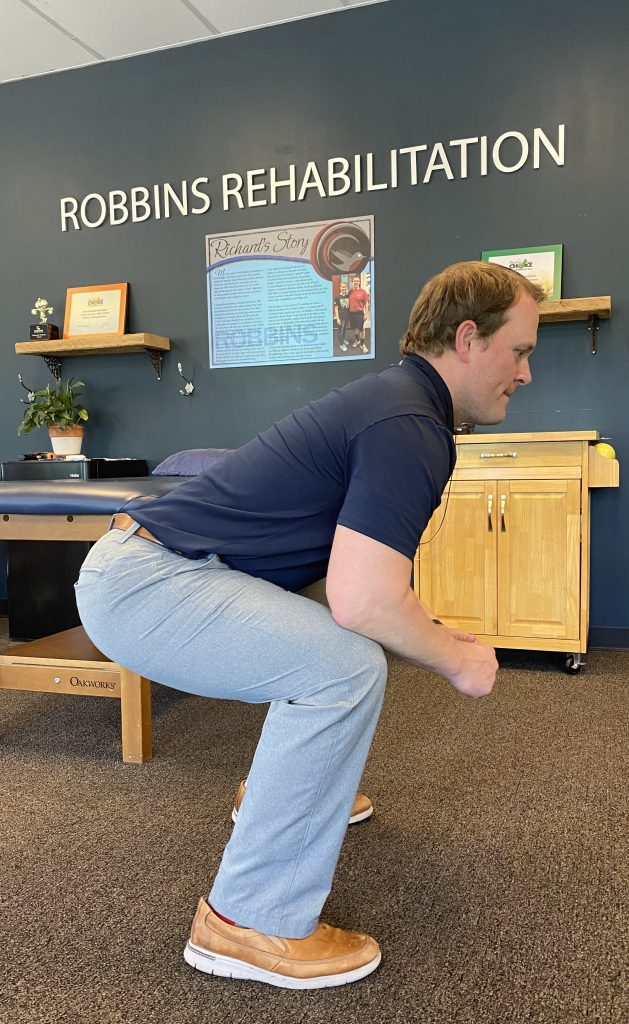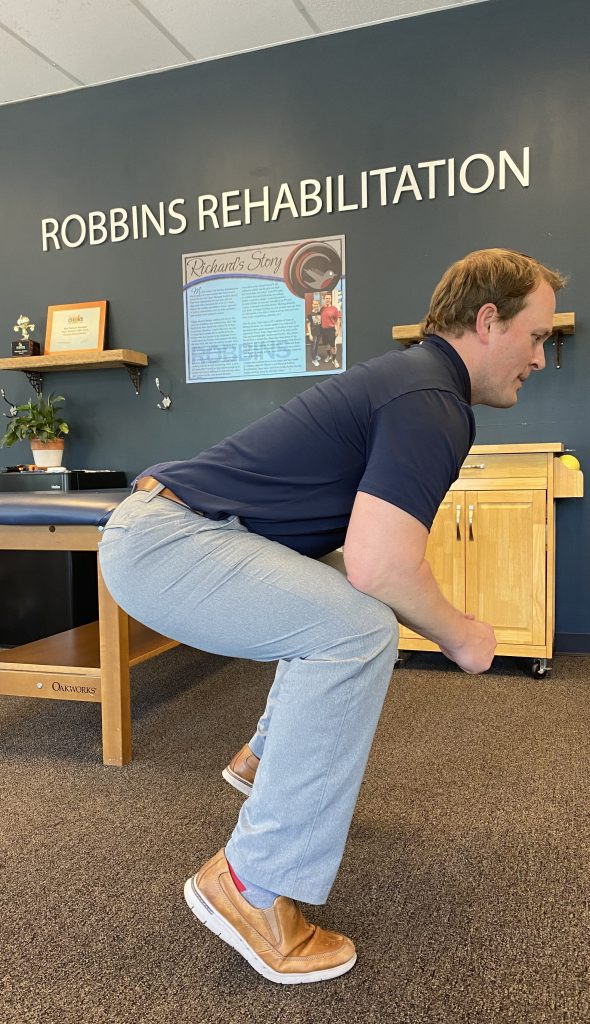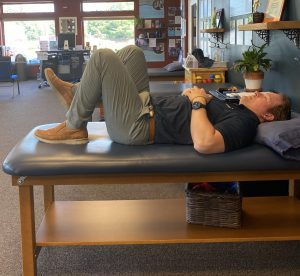Every runner should be performing squats and deadlifts or some variation of these exercises as part of their training. Emerging research has shown that adding in heavy resistance training to the programs of distance runners improves running economy, tendon stiffness, bone health, and reduces the normal age-related loss of muscle mass. Outside of these basic lifts, below are important accessory exercises to effectively train all the muscle groups associated with running to keep you healthy!
Single Leg Bridge
Lying on your back, bend both legs so your feet are flat on the floor. Bring one knee up towards your chest and hug the leg with your arms. Tighten your abdomen and press through the leg still on the floor to lift your hips off the floor as high as you can. Make sure to keep your hips level at the top. Hold this position steady and return to the starting position.
Suggested program: Repeat this 10-20 times holding for 5 seconds and do this 1-2x per day.
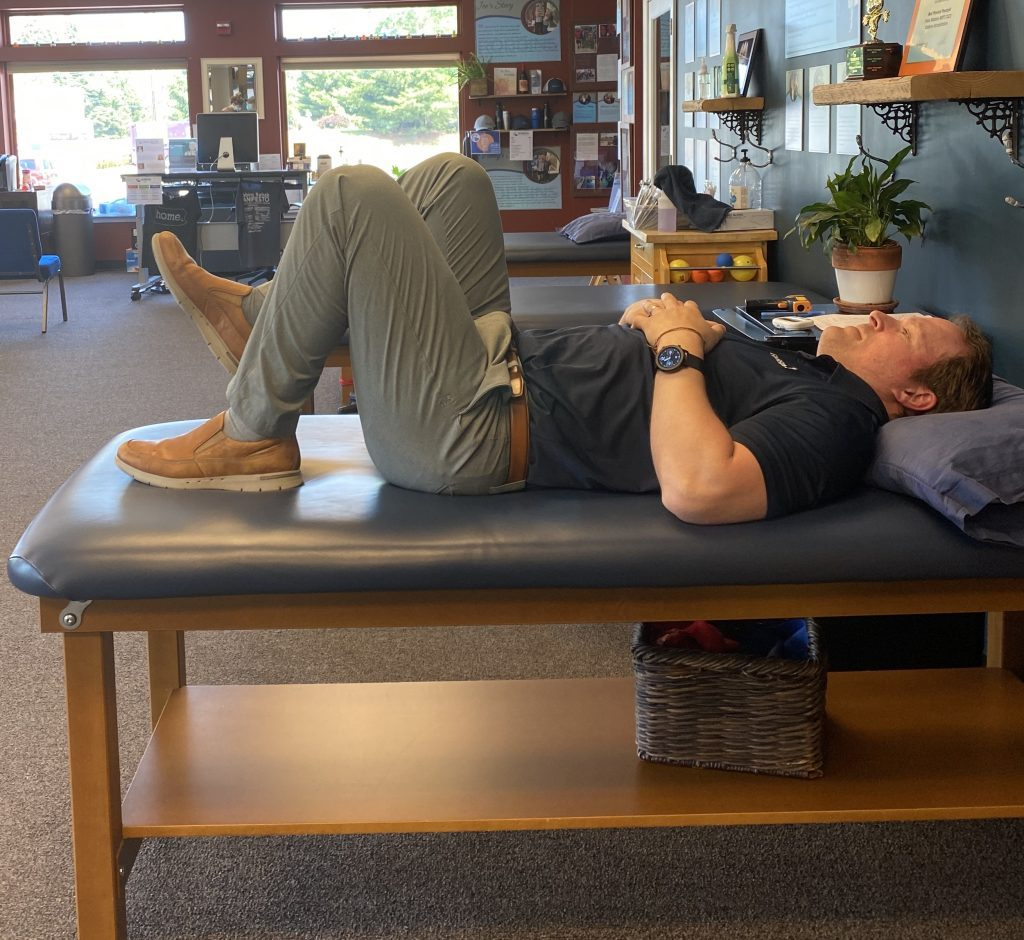
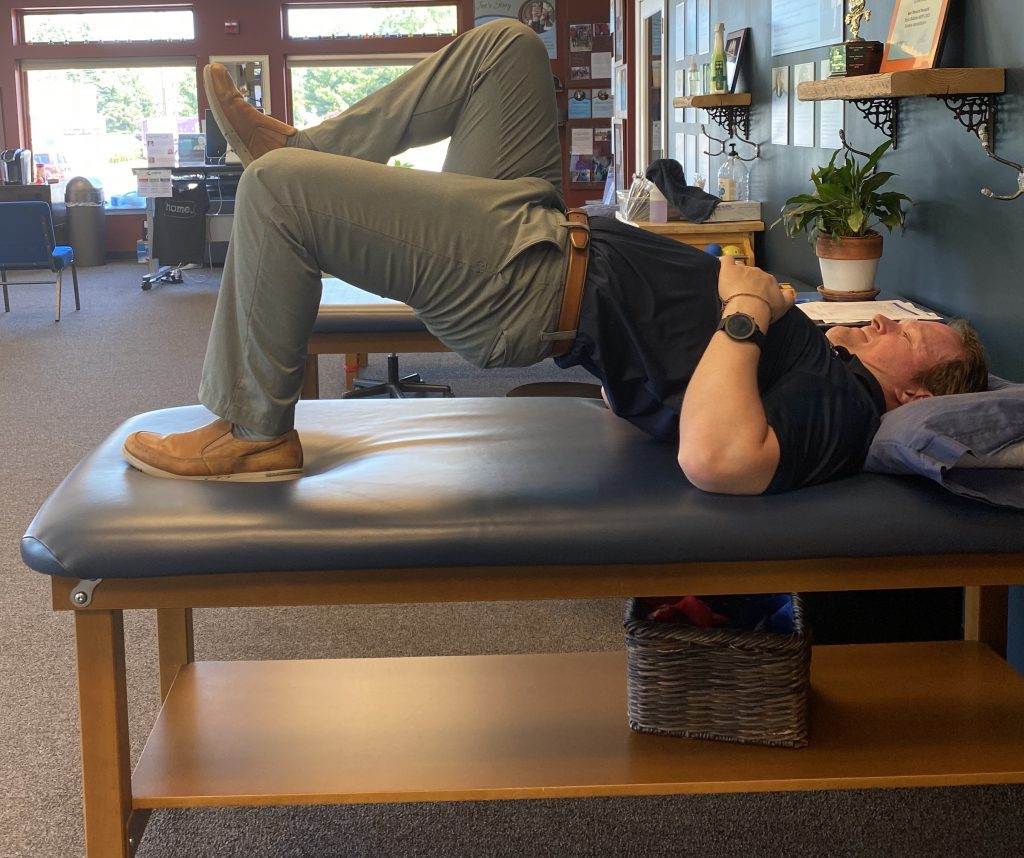
Hip Airplanes
To begin this exercise, assume a single leg stance. Lock your ribcage down by bracing your core. Spread your arms out to the side and rotate your torso forward over your stance leg while kicking your back leg behind you. Keep your trail leg completely straight and your stance leg knee locked in a slightly bent position. Rotate your torso in towards your stance leg followed by rotating it away with a short pause in each position. A cue that helps some is to think about moving your belly button towards your stance leg and then out away to the side. If this is too difficult you may start by learning the movement with your hands lightly assisting an object in front of you, then as you improve place your hands on your hips and finally extend them out to the side.
Suggested program: Perform 10-20 repetitions with a short pause in each position. Do these exercises 1-2x per day.
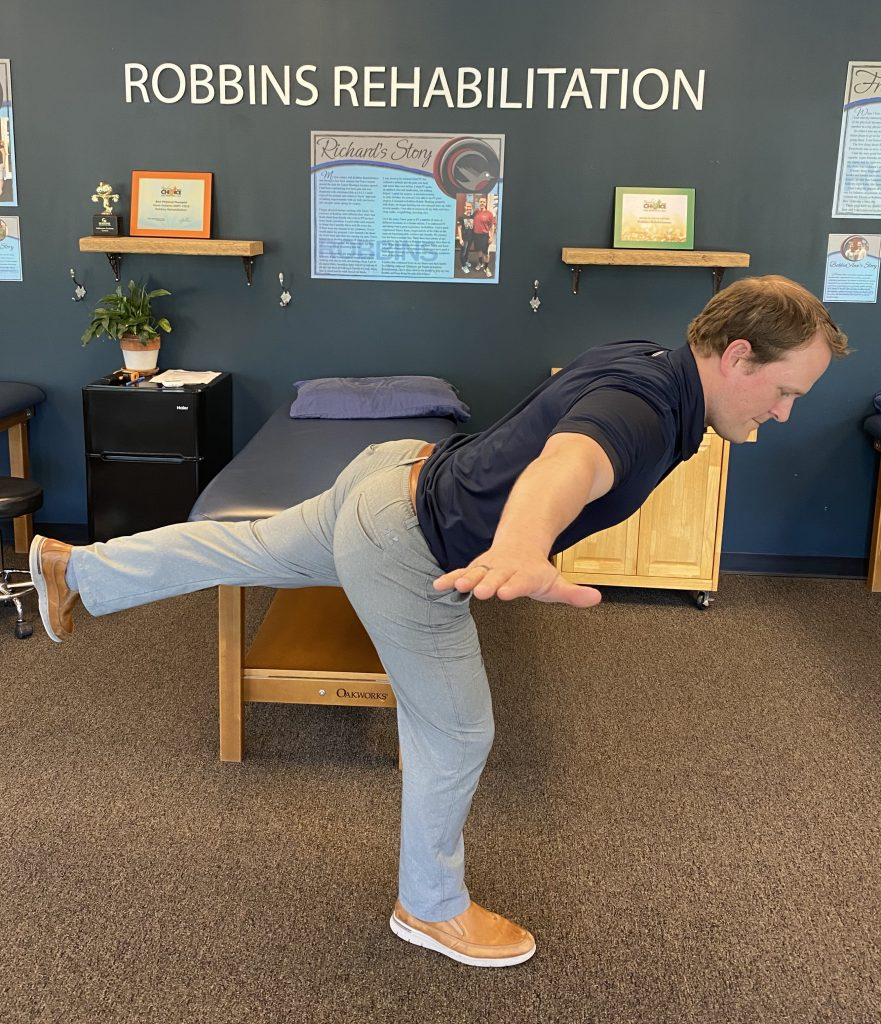
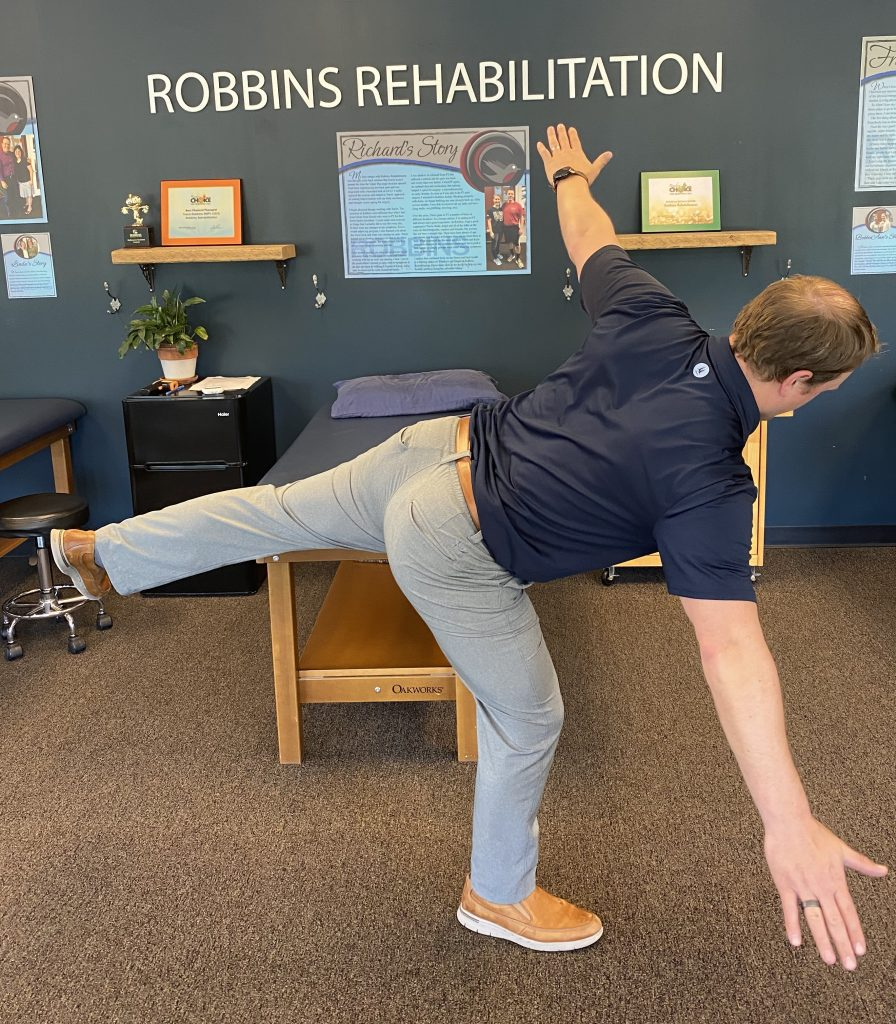
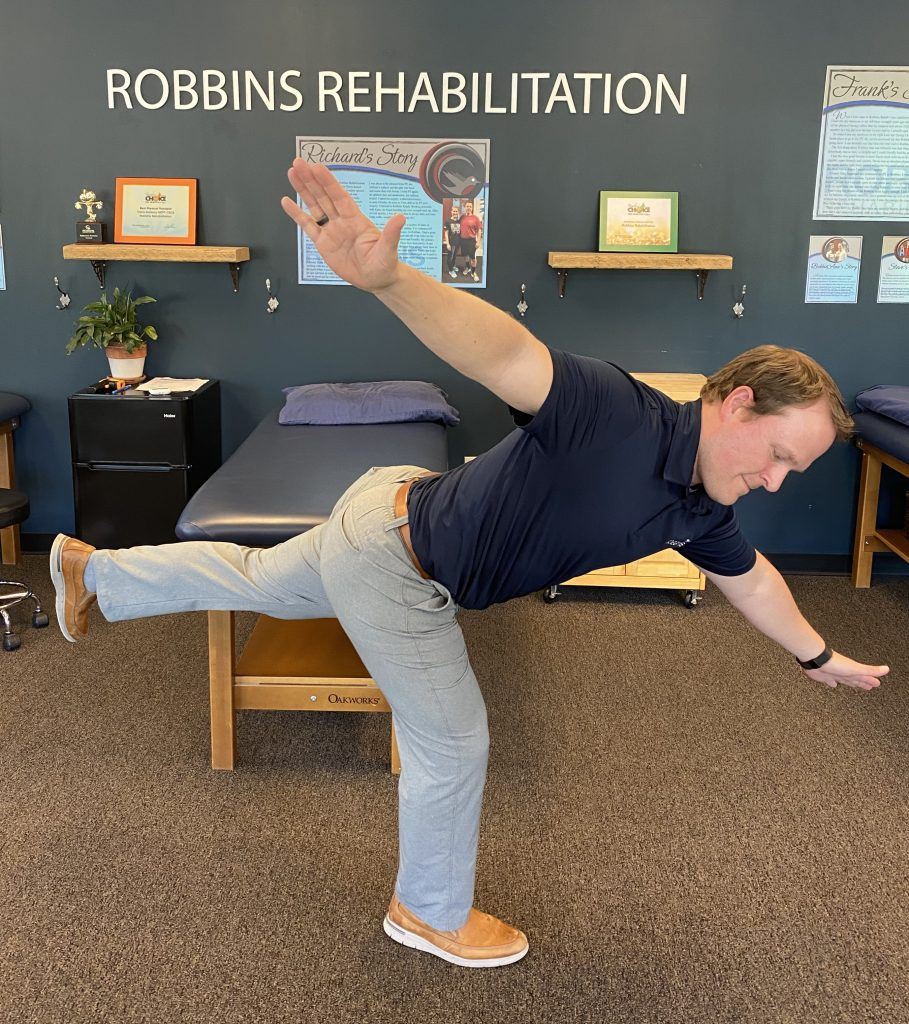
Step downs
To perform this exercise, stand on a box/step(ideally 6 inches) with the left leg on the box. Now, slowly reach the right heel forward as far as possible while squatting down on the left side all the while keeping the left heel down and weight distributed evenly through the ball of the foot and heel. Pause at end range of motion and return to the start position without pushing off the floating leg. If this is too difficult you may begin with a lower step height and gradually increase it. You may also add load in the form of dumbbells or a barbell on your back if too easy.
Suggested program: Perform 10-20 repetitions for 1-2 sets on each leg. Do this exercise 1 time per day.

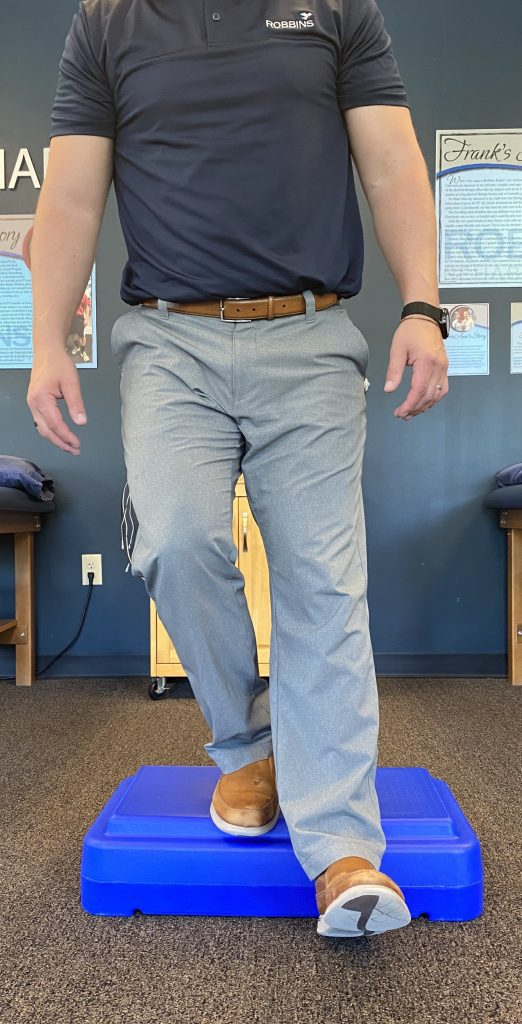
Loaded carry marching
For this exercise a dumbbell or kettlebell works best, but you may carry anything with weight such as a backpack or bag filled with objects to add weight. Depending on the amount of space available to you, you may march in place or back and forth across a room. Hold the weight on one side of the body down at your side and maintain a tall posture with your abdomen braced then alternate lifting one leg up so that your knee is at or slightly above hip height and pause before lowering back down. Be sure to keep the leg you are balancing on straight and grip the ground with your foot. Take a short rest then perform the drill again with the weight on the other side. You may vary holding the weight at your side or up on your shoulder for a different challenge.
Suggested program: 1-2 sets of walking heel to toe 20 feet for 3 reps. Perform 1 time per day.
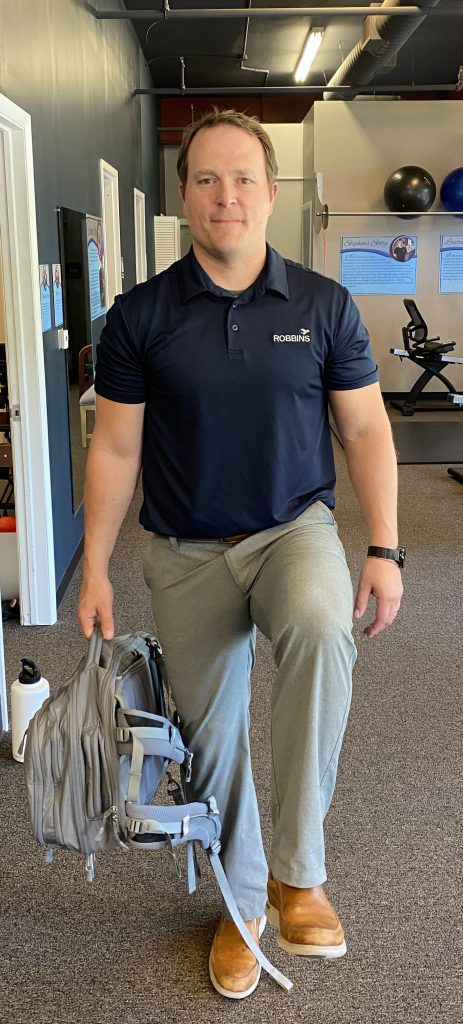
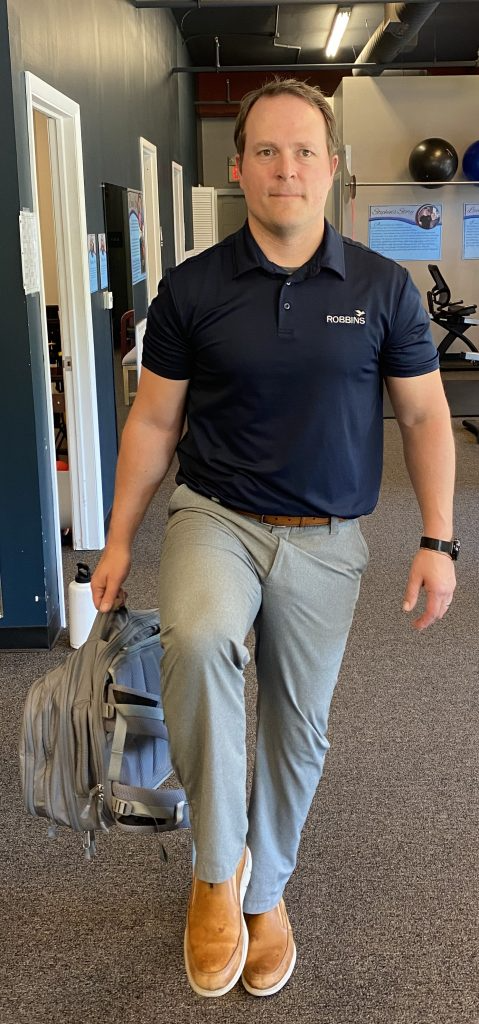
Soleus heel raise
Begin by getting into a parallel squat and rest your forearms on your thighs. Your torso will be leaned forward and you should keep light pressure into your thighs with the arms. Maintaining this position, rise up onto your toes as high as you can and pause. Slowly control back down between each rep.
Suggested program: Hold this position for 5 seconds and complete 10-20 repetitions on each side. Do this 1-2 times per day.
